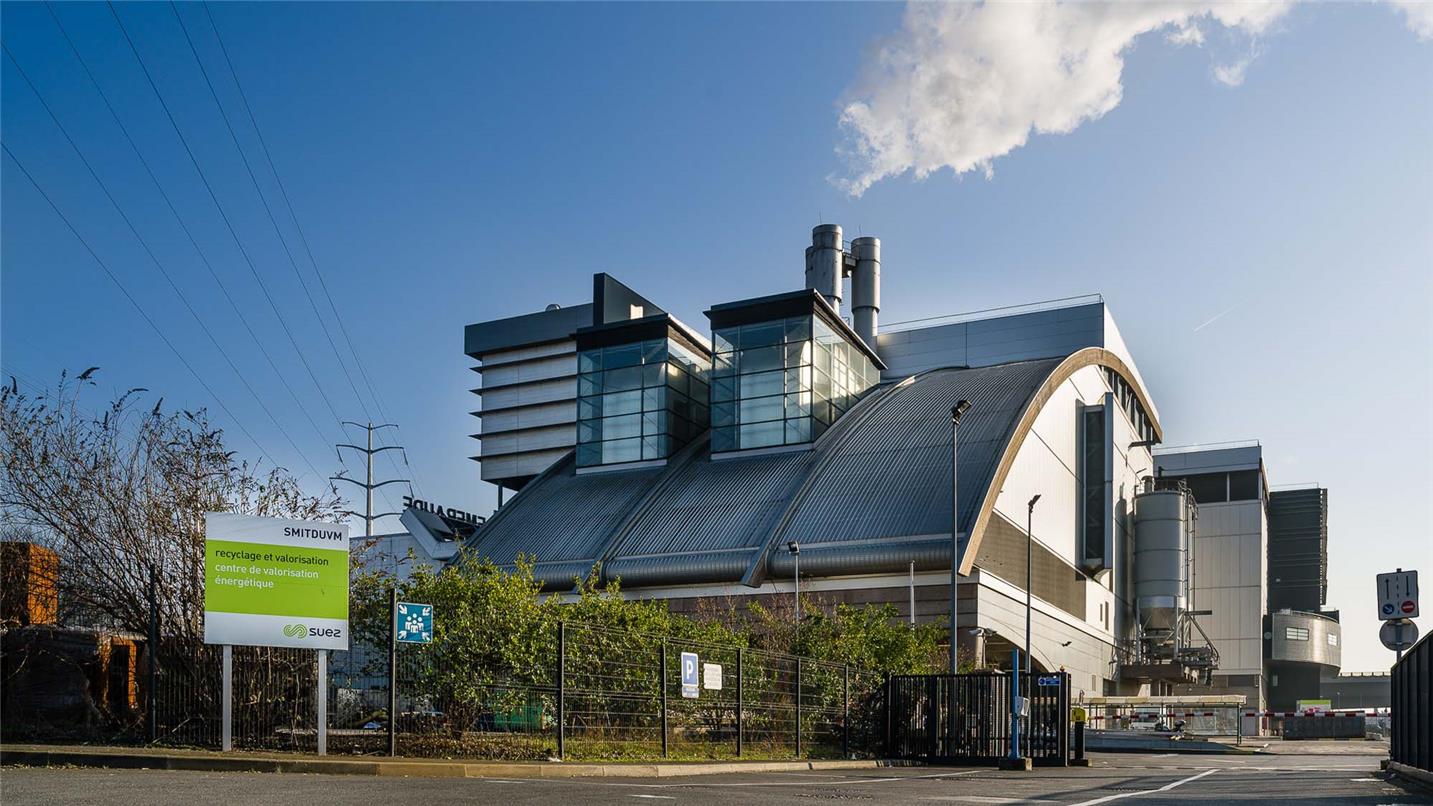The mission
In December 2018 the Val-de-Marne urban mixed waste treatment agency (SMITDUVM) entrusted the concession to upgrade and operate the Créteil energy-from-waste plant to SUEZ – in partnership with TIRU, a Dalkia subsidiary – for a period of 20 years via the dedicated company Valo’Marne. The contract involves transforming carbon into oxygen, producing hydrogen for vehicles, green electricity and heat for the district heating network and growing tomatoes in greenhouses while creating local jobs.
A dream? No, a concrete example of the circular economy!
A dream? No, a concrete example of the circular economy!
A charter of excellence
Through this project, worth nearly €1 billon over 20 years, SUEZ is committed to making the facility a showcase for the circular economy. To formalise this commitment, all the players involved in the project – SUEZ, SMITDUVM, the Grand Paris Est Avenir, Paris Est Marne et Bois and Grand Orly Seine Bièvre local authorities, TIRU and the EDF group – signed a charter of circular and solidarity excellence on 29 January 2018.
Its goal? To reiterate SUEZ’s ambition to make this facility a benchmark for the circular and solidarity economy in Ile-de-France. How? By developing a local energy mix based on waste, improving air quality with innovative solutions, encouraging access to local jobs and raising awareness of environmentally responsible citizenship.
Its goal? To reiterate SUEZ’s ambition to make this facility a benchmark for the circular and solidarity economy in Ile-de-France. How? By developing a local energy mix based on waste, improving air quality with innovative solutions, encouraging access to local jobs and raising awareness of environmentally responsible citizenship.
“The biggest project in the last 20 years in Ile-de-France”
These are the words of Laurent Cathala, mayor of Créteil, expressing his pride in a project he describes as particularly “innovative and bold”. The first installations will be operational by 2023. Processing capacity will be expanded to recover even more waste – 345,000 tonnes a year – and convert it into green electricity at the same price as normal electricity for the SMITDUVM member municipalities, or into heat for Créteil residents. Not forgetting the installation of a carbon sink that uses microalgae to capture CO2 and convert it into biomethane for use in the gas network; hydrogen production to fuel clean vehicles, a first in France; the reduction of NOx emissions to less than 50 mg/Nm3 and the use of river transport to limit truck journeys, with a transfer quay in Champigny-sur-Marne.
A commitment to workplace integration
What’s more, SUEZ is planning to build an urban greenhouse covering 4,500 m2, heated directly by the energy-from-waste plant, to grow tomatoes that will be sold locally – a 100% circular community initiative! Working with the Val-de-Marne branch of the Maison pour Rebondir programme, created by SUEZ and dedicated to social innovation and employment, this new type of greenhouse will generate six jobs. The icing on the cake is that it will offer educational opportunities for as many people as possible, acting as a benchmark for awareness of sustainable development in urban settings on the scale of Greater Paris.
Who could have imagined, just a few years ago, that it would be possible to breathe better, drive cleaner, heat our homes and eat better thanks to waste? A project that deserves to be watched closely…
A commitment to workplace integration
What’s more, SUEZ is planning to build an urban greenhouse covering 4,500 m2, heated directly by the energy-from-waste plant, to grow tomatoes that will be sold locally – a 100% circular community initiative! Working with the Val-de-Marne branch of the Maison pour Rebondir programme, created by SUEZ and dedicated to social innovation and employment, this new type of greenhouse will generate six jobs. The icing on the cake is that it will offer educational opportunities for as many people as possible, acting as a benchmark for awareness of sustainable development in urban settings on the scale of Greater Paris.
Who could have imagined, just a few years ago, that it would be possible to breathe better, drive cleaner, heat our homes and eat better thanks to waste? A project that deserves to be watched closely…
345,000
tonnes
of waste: annual treatment capacity
4,500
m²
size of the urban greenhouse
